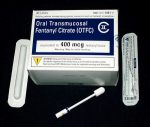When we hear the word addiction, it often conjures up negative images or stereotypes. We might think someone has made poor choices, is down and out, or weak-willed; we might think that it’s a problem confined to the Downtown Eastside. Rarely do we think of the word disease or think of addiction as a mental health issue.
Jewish Addiction Community Services (JACS) is committed to providing opportunities for the community to learn together and, on April 4, JACS and the Jewish Community Centre of Greater Vancouver youth department are presenting a community forum called The Fentanyl Crisis: How It Affects Our Teens. This free event, geared to parents, teens and youth workers, is designed to help build awareness of illicit drugs, specifically fentanyl, and to teach how these drugs affect the teenage brain, and how to talk to teens about drugs.
According to a B.C. Coroners Services report, which was published last month, 86% of fatal illicit drug overdoses in 2018 occurred inside (i.e. not on the street) – 58% in private residences. The majority of these deaths were men between the ages of 19 and 59.
While the problem of addiction in British Columbia is well known, what is less well known or acknowledged is how our Jewish community is affected. In fact, denial that the problem exists is more the reality. Rabbi Shais Taub, a specialist in addiction and spirituality, who visited Metro Vancouver in 2012, said one in 10 people are touched by addiction – whether directly or through a close family member. It makes sense that those statistics are similar in our community.
Compare the reaction of when you hear about a friend who has recently been diagnosed with cancer, or another debilitating disease. While we may not know how to help, when a loved one is affected with a life-altering illness, we are usually motivated to offer assistance, whether it is making meals, visiting or giving money to a cause. In sharp contrast, addiction tends to push us away and we tend to blame the person who has a substance use disorder, instead of wanting to rally around and help them.
Why does a family feel shame and the need to shield others from knowing their loved one is affected by the disease of addiction? Why does the person themselves feel the need to hide? Clearly, the answers are complex. In a recent visit to an emergency department, a patient pleaded with a nurse that “no one in my community must know I am here.” That person was a member of our Jewish community. Not only are people struggling with an illness, but they often can’t reach out for help or don’t know where to turn.
We must and can work to reduce the stigma of addiction so that both families and people with addiction are supported. It begins with awareness of resources and education, with fostering a culture of being less judgmental, of being curious and open, and being willing to talk about how someone may have found themselves suffering from addiction. We also need to remind ourselves of the Jewish values of teshuvah (repentance), tikkun olam (repair of the world), community and chesed (loving kindness). People knowing that there are resources available, when they are ready, is key to recovery.
The April 4 community forum includes panelists Dr. Alana Hirsh, a physician working in the Downtown Eastside; Lee Gangbar, a registered nurse who works both at St. Paul’s Hospital’s emergency department and as an outreach healthcare nurse; and Anne Andrew, a parenting coach and author. To attend the forum, RSVP at eventbrite.ca (Fentanyl Crisis). For more information on the program or JACS, email [email protected].
Shelley Karrel is the manager of counseling and community education with JACS. She has her master’s in clinical counseling, is a registered clinical counselor and also has a private counseling practice. She can be reached at [email protected].


